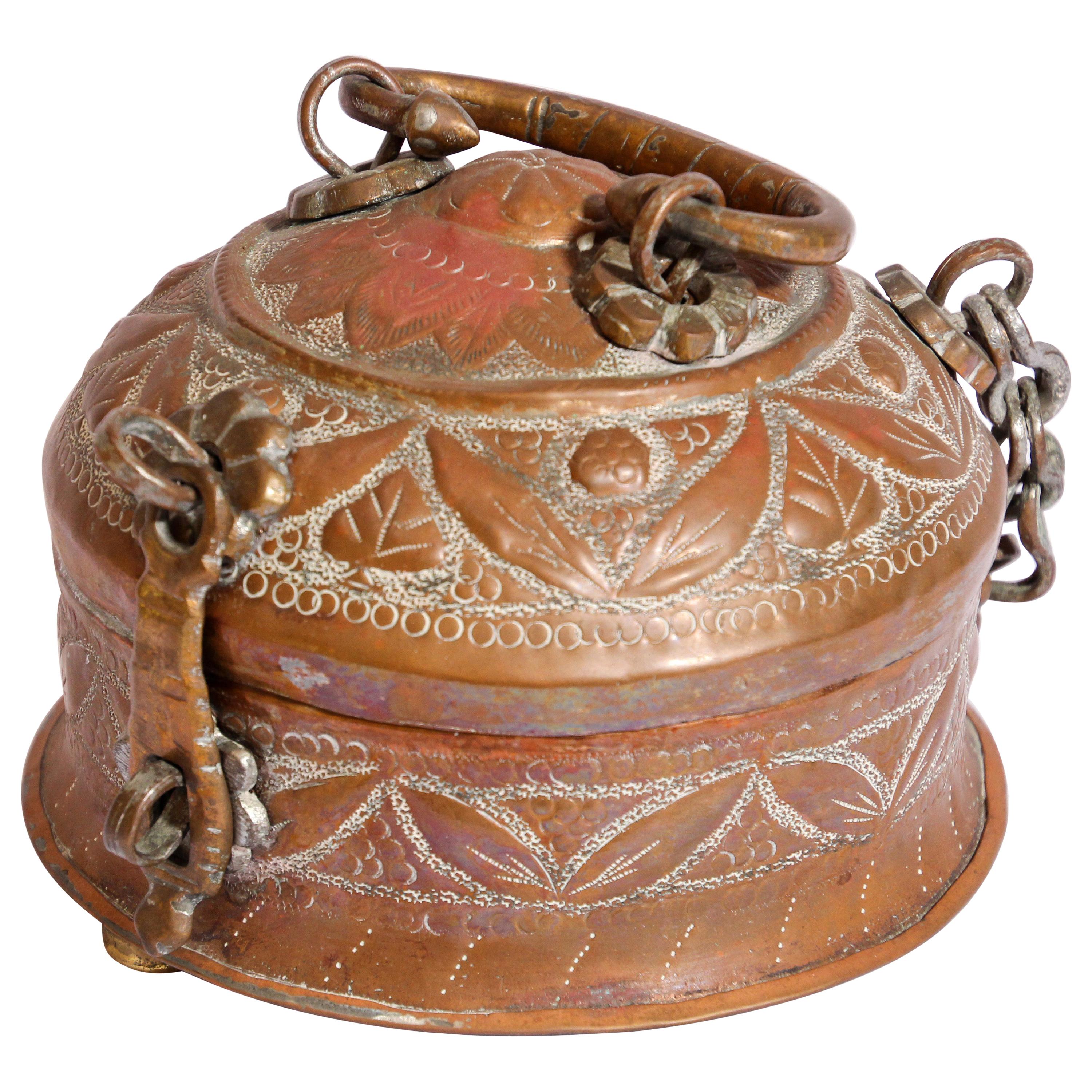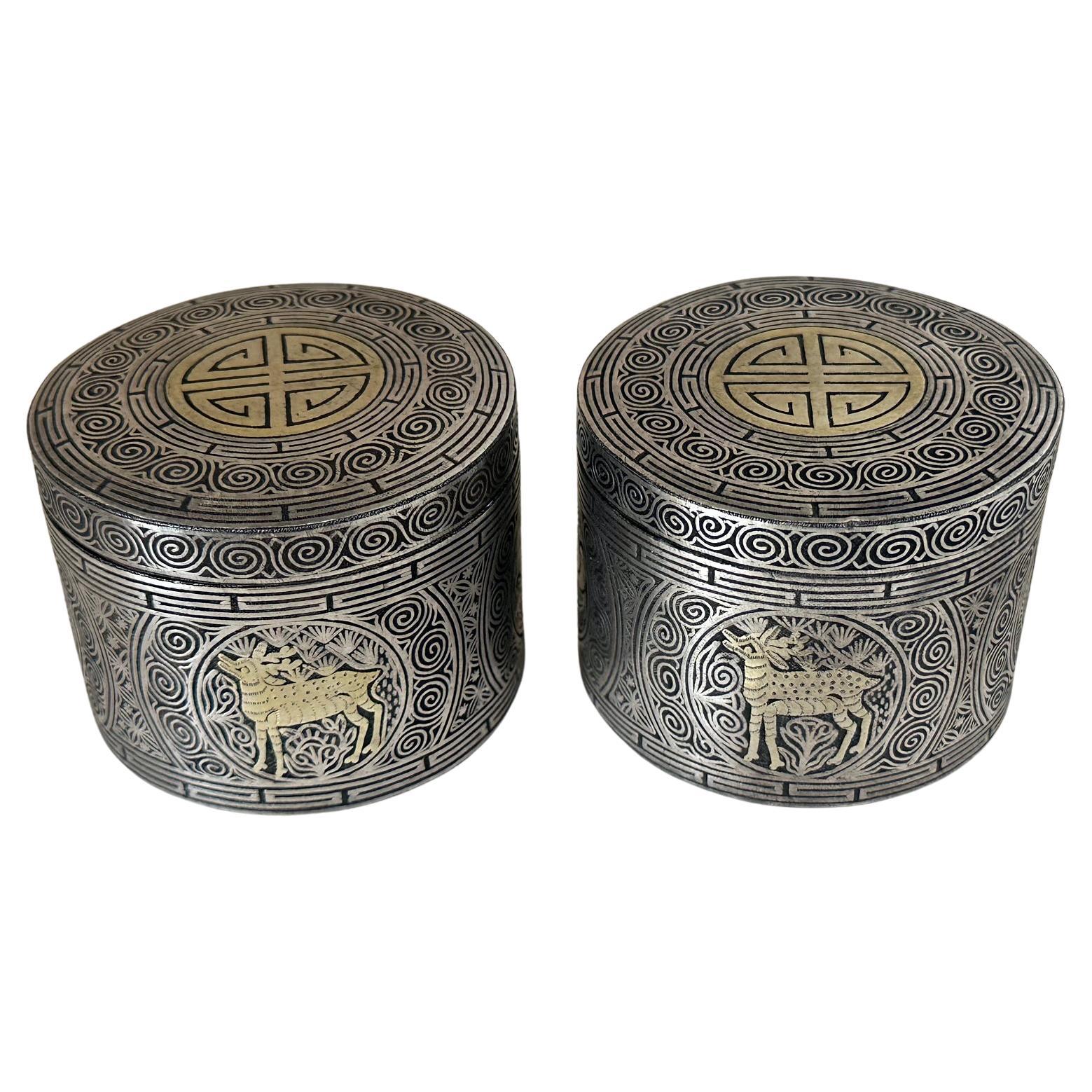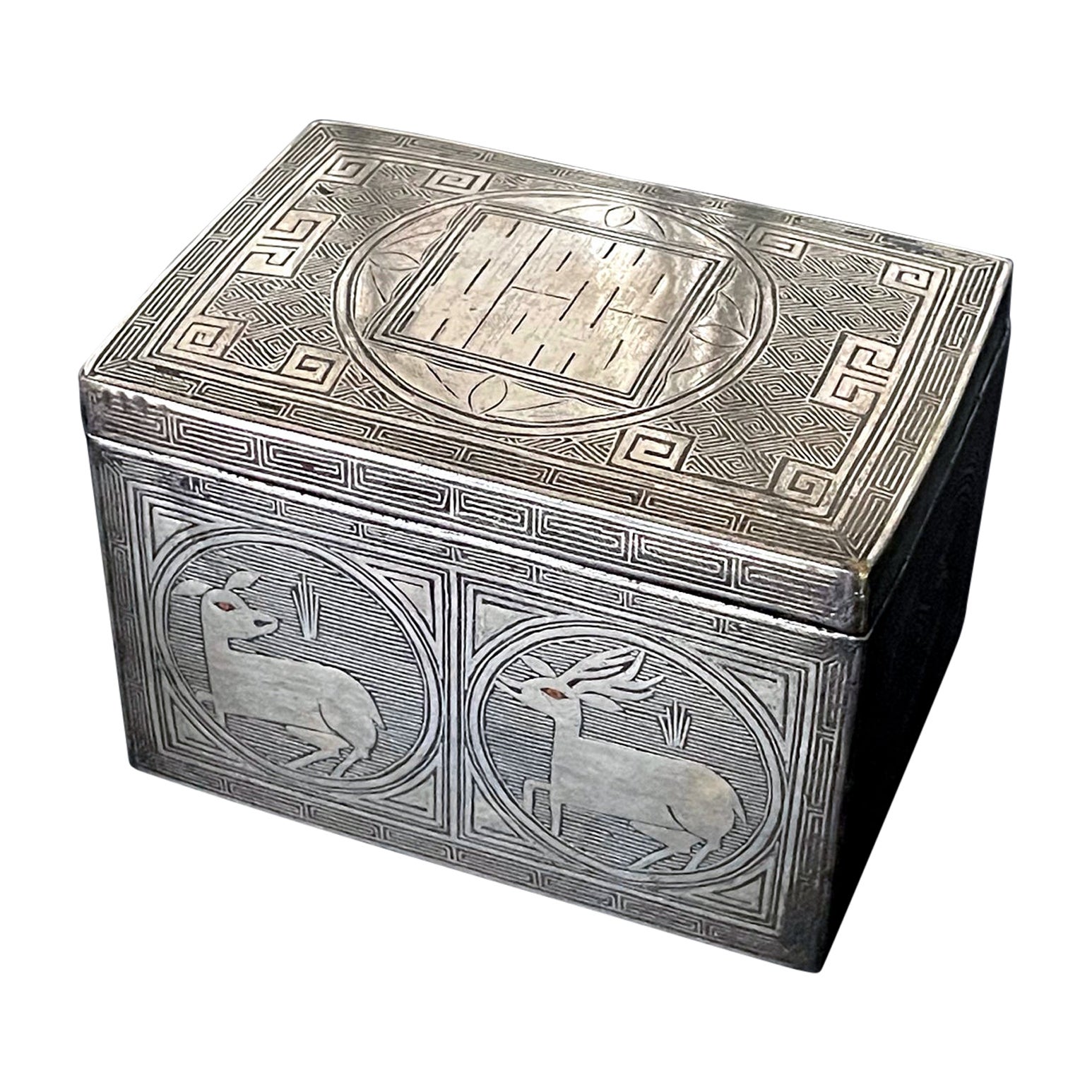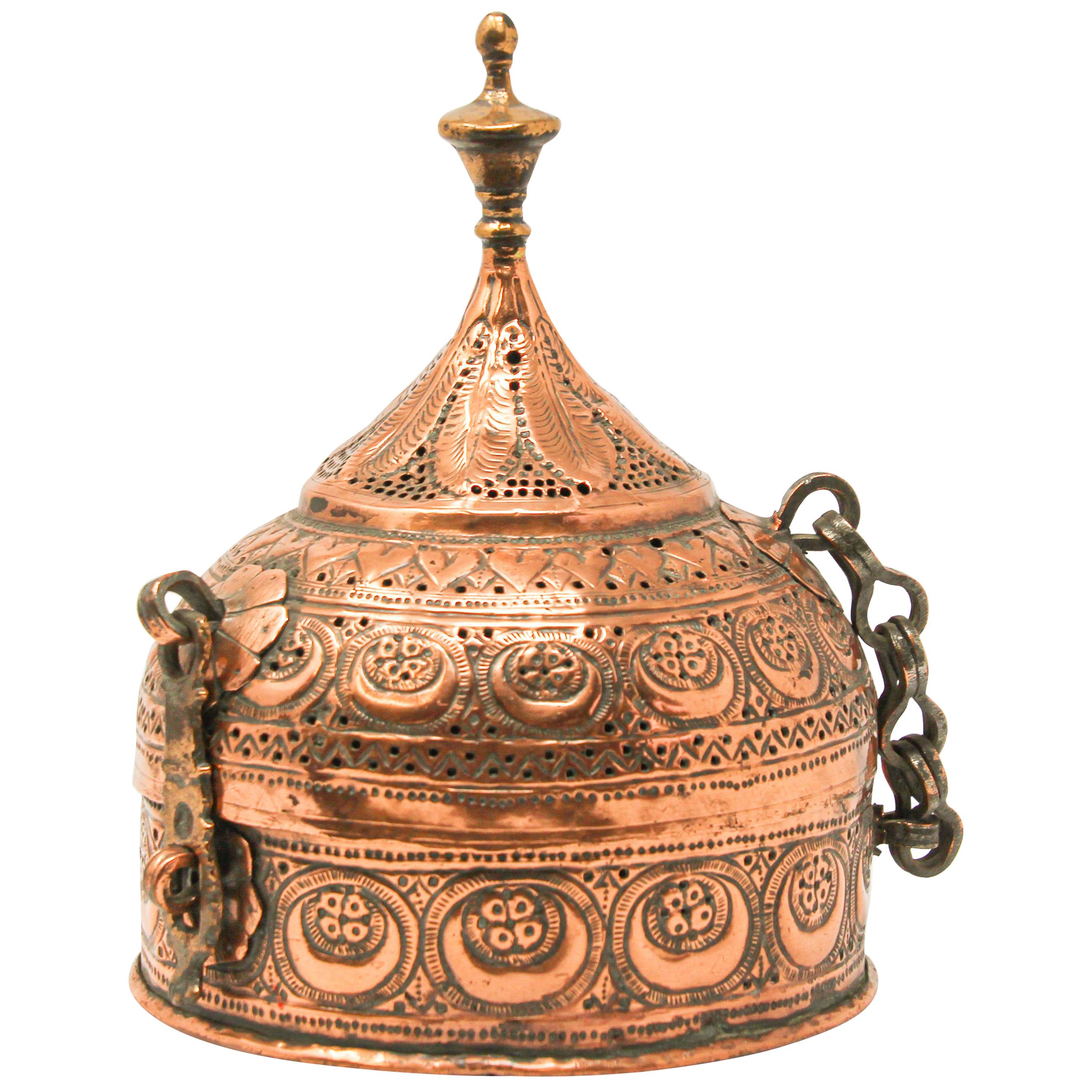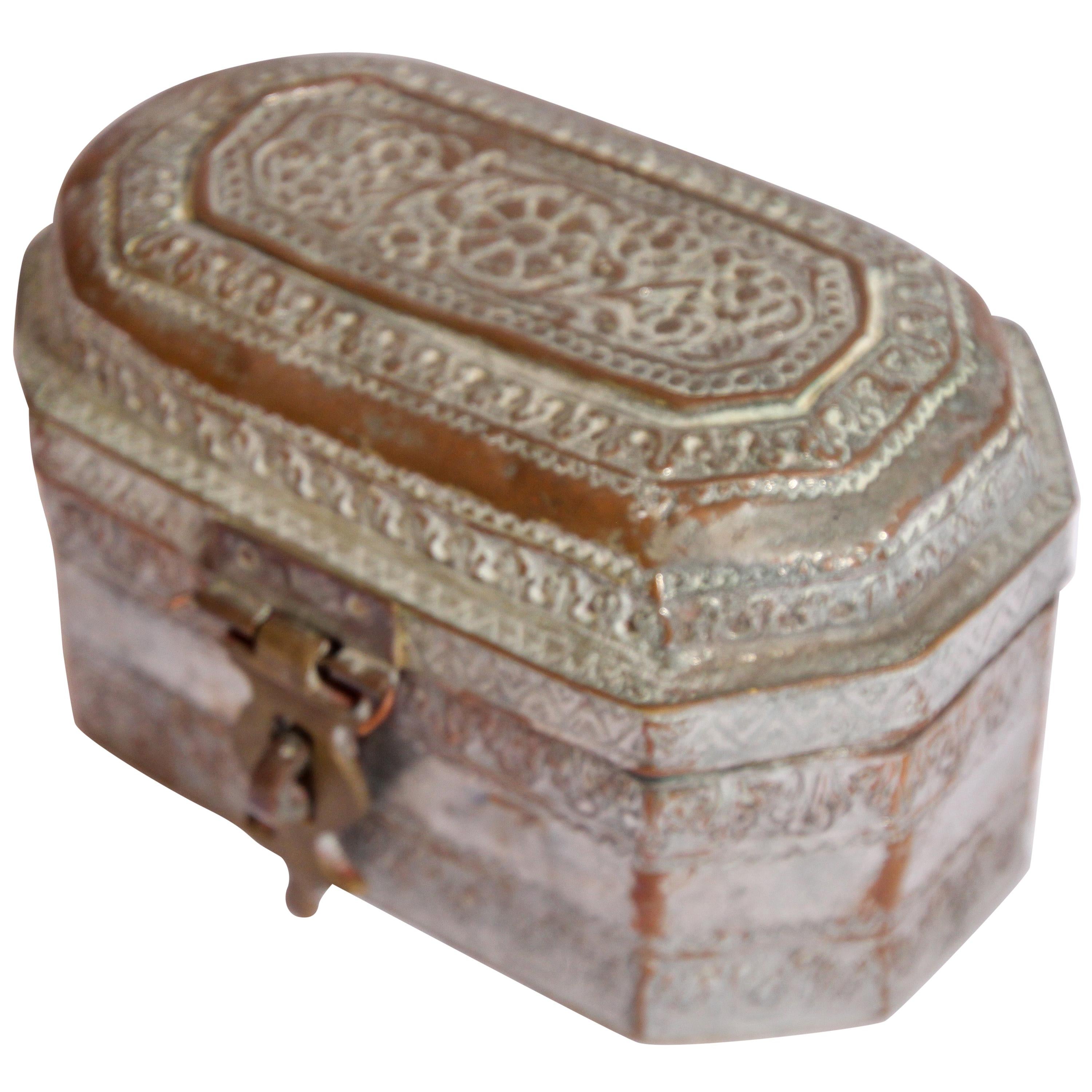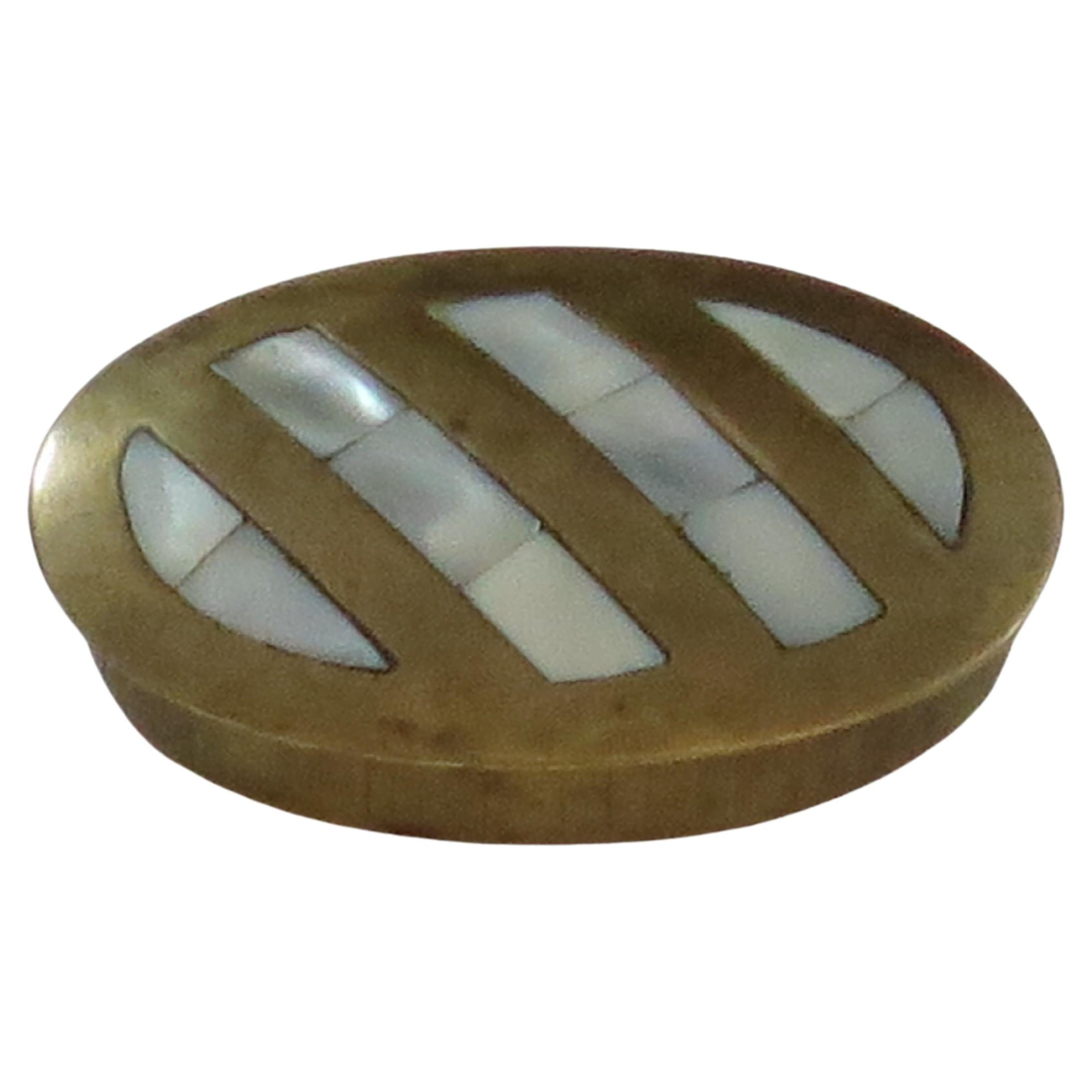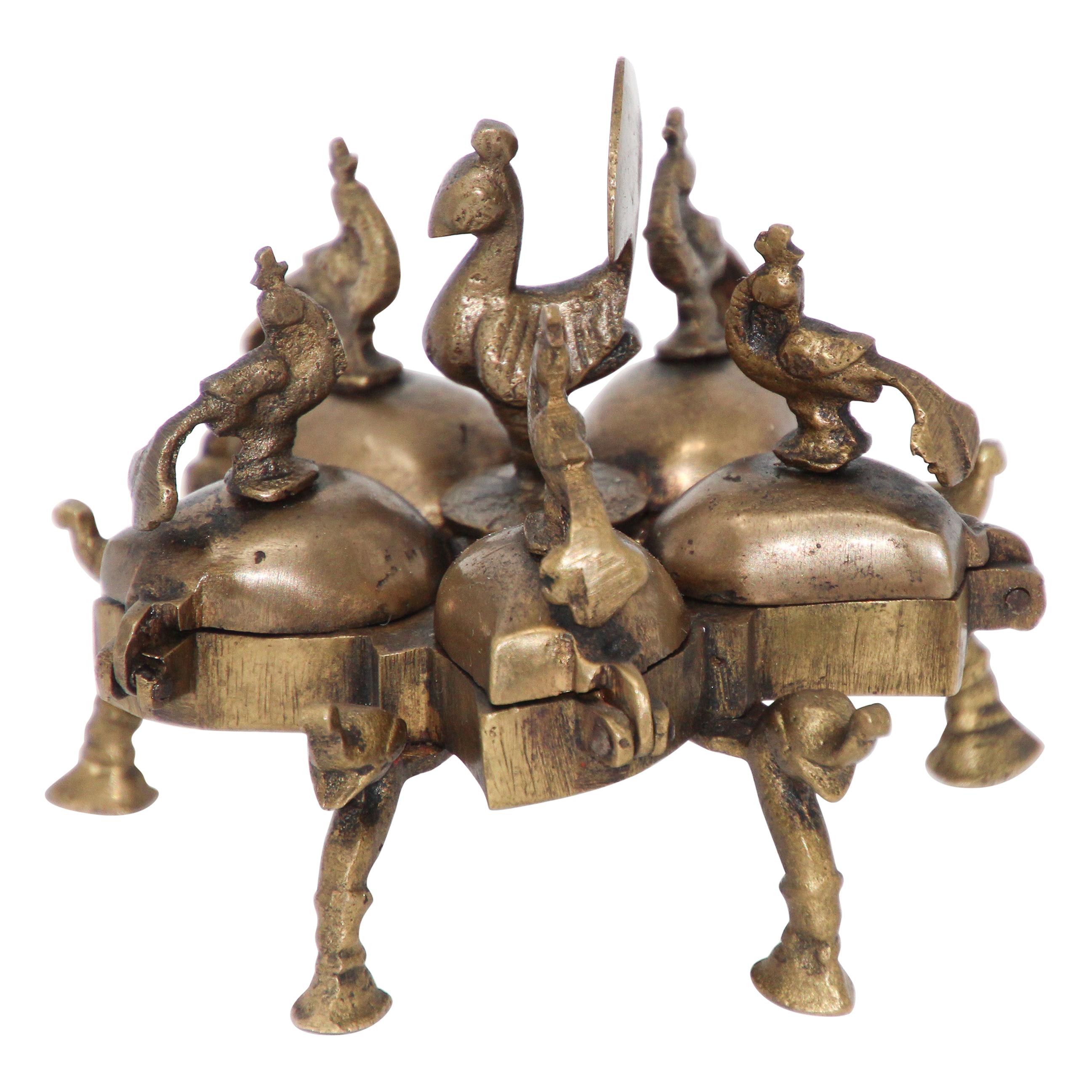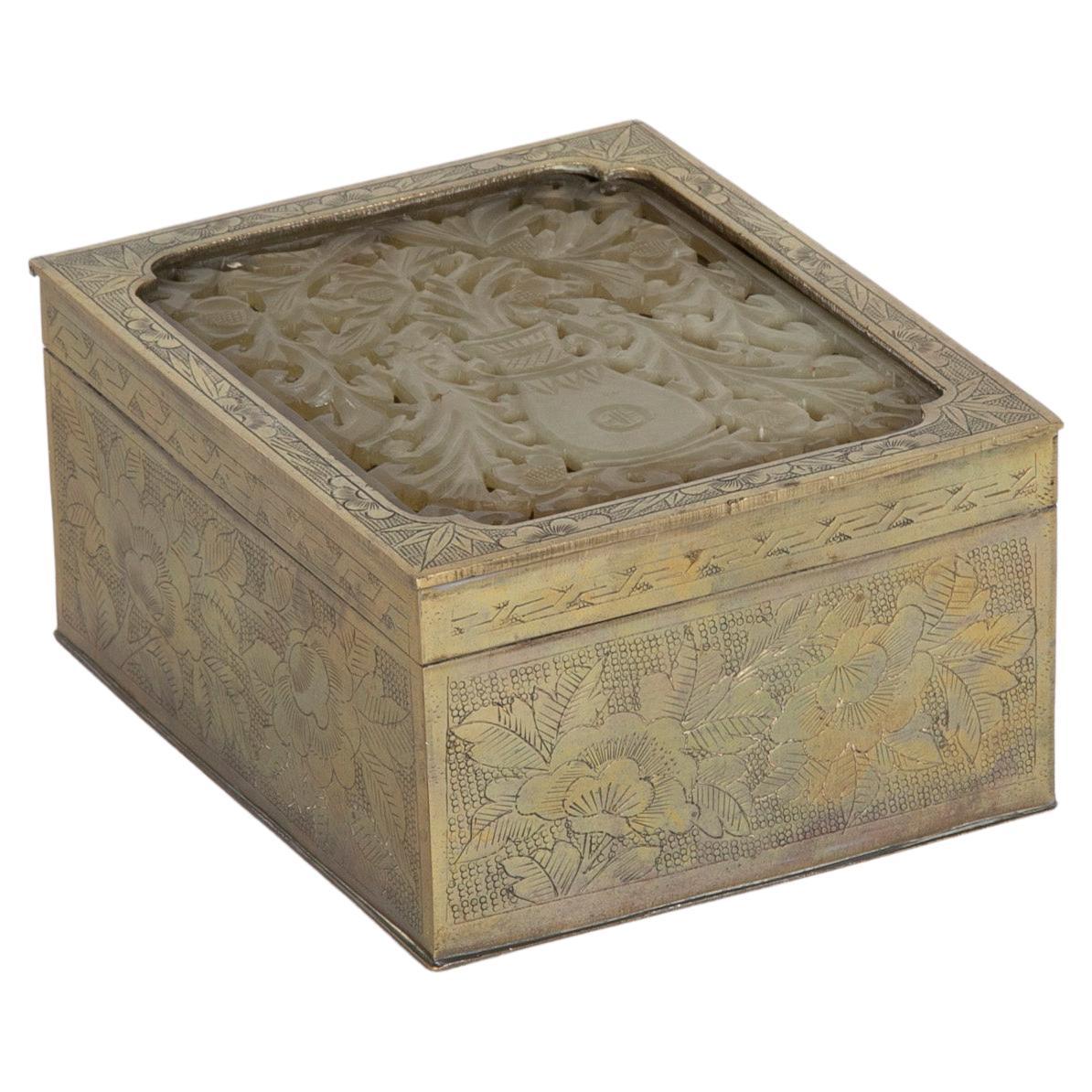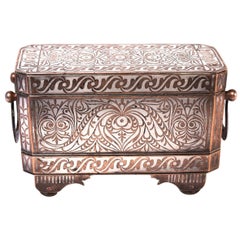
Southern Philippine ‘Mindanao’ Brass with Silver Inlay Betel Box
View Similar Items
1 of 10
Southern Philippine ‘Mindanao’ Brass with Silver Inlay Betel Box
About the Item
- Dimensions:Height: 5.75 in (14.61 cm)Width: 9 in (22.86 cm)Depth: 4.25 in (10.8 cm)
- Style:Tribal (Of the Period)
- Materials and Techniques:
- Place of Origin:
- Period:
- Date of Manufacture:circa 1850
- Condition:Wear consistent with age and use.
- Seller Location:New York, NY
- Reference Number:Seller: UH800651stDibs: LU4546213906872
You May Also Like
- Rajasthani Decorative Brass Lidded Betel Caddy BoxLocated in North Hollywood, CAHandcrafted decorative round brass Indian lidded betel box with latch and a top handle. Delicately and intricately hand-chased with geometric designs. Used as a tea caddy with tea bo...Category
Antique Late 19th Century Indian Agra Metalwork
MaterialsBrass, Copper
- Set of 6 Mindanao Brass Silver Betel Boxes, PhilippinesLocated in Dallas, TXPresenting an amazing set of 6 Mindanao brass silver betel boxes, Philippines. Betel chewing was prevalent in the southern Philippines as in much o...Category
Antique Late 19th Century Philippine Islamic Tea Caddies
MaterialsSilver, Brass, Copper
- Asian Handcrafted Oval Betel Box in Metal SilveredLocated in North Hollywood, CAAsian decorative trinket lidded box in metal silvered hammered and etched with organic floral design. Anglo Raj style oval form betel box. Dimensio...Category
Mid-20th Century Indian Anglo Raj Metalwork
MaterialsMetal
- 19th C. Asian Brass Betel Nut Pandan Box with Lid, Northern IndiaLocated in North Hollywood, CAAsian Beaten Brass Betel Nut Pandan Box, Northern India. Beautiful antique hand hammered Asian round brass betel with a lid and delicate engravings with floral design handle hand crafted by skilled artisans from Northern India. Indian Beaten Copper Betel Nut Pandan Box with hand hammered beaten floral and incised decoration used to store betel leaf, lime, tobacco and the nut from the areca palm. This mixture of ingredients when prepared and placed in the mouth for long periods gives the user a mild aphrodisiac affect. The preparation of the betel nut with lime stored in ornate boxes with several smaller internal containers was popular all over Asia and is still a common practice in Myanmar and India and among the hill tribes of many S. E. Asian countries. Engraved with intricate designs on the lid which has a carved floral design handle and a latch in front for opening or closing the box and for safekeeping. Nicely hand-hammered with intricate details. Please check photo #5, there is about 1 inch damage area on the side of the box. Museum quality AsianHand-hammered decorative Islamic brass folk art metalwork collector treasure box. Measures: Diameter 7 in. x Height 4 in. The box has a rich, deep brown patina. Quality of Mughal style. A pandan was used to store the pan, or betel quid after it had been stuffed and rolled ready to eat, rather than for the individual ingredients. The chewing of betel is an ancient Asian tradition comparable to tobacco in the western world. Betel consists of three main ingredients: the areca nut, betel leaf and lime paste. Betel was, and still is enormously popular throughout Asia and plays a major role in the entertaining of guests, in courtship and marriage, and in the traditional etiquette of the royal courts, where it often forms part of the state regalia.[1] Research on several pandan boxes has been published by Zebrowski.[2] Brownrigg, H. Betel Cutters...Category
Antique 19th Century Indian Moorish Decorative Boxes
MaterialsBrass
- Pair Korean Iron Box with Silver Inlays Joseon DynastyLocated in Atlanta, GAA fine pair of Korean iron box with intricate silver inlays dated to the late Joseon Dynasty circa 19th century. The matching circular boxes was most likely used to store tobacco lea...Category
Antique 19th Century Korean Other Metalwork
MaterialsSilver, Iron, Bronze
- Fine Korean Iron Tobacco Box with Silver Inlay Joseon DynastyLocated in Atlanta, GAA fine Korean iron box used to store tobacco leaves dated to the late Joseon Dynasty circa 19th century. The box is made from iron and has a heavy weight, although the wears along the edges of the lid and base exposes a bronze metal color underneath, indicating the iron metal may contains a high level of copper. The surface was beautifully decorated with elaborate silver inlay that covers the entire surface except the base. The extraordinary workmanship depicts a pair of deer within the circled square (shape of heaven and earth) and a lined background on the long sides and a crane with spread wings on the shorter sides. Both animals were associated with longevity. Their eyes were highlighted with copper inlay, adding a lively touch to the animation. The lid is centered with a Chinese character "Xi" (Paired-Hui in Korean), which means double happiness. (In Chinese culture, it is often used in a wedding ceremony). The large symbol was set on geometrical background of tightly scrolling diamond pattern surrounded by stylized Ruyi mushroom heads, another floral longevity symbol. Archaic fret cloud band borders the entire perimeters of the lid and the container. Tobacco was introduced to Korean in the first half of the 17th century and gradually gained popularity. When the tobacco was started being smoked in shredded form instead of rolled leaves, there rose the production of the smoking accessories, with some in fine quality as luxury items for the elite. The accoutrement such as this box is a fine example made in late Joseon dynasty, using extensive silver inlay, a technique called "jjoeum-ipsa", in which the silver wires were hammered into the scorched iron surface to create the elaborate design. Similar boxes with variation of shape and motifs are in the collection of several major museums. Compare the box with item Gu 754 in the National Museum of Korea; item 22.78 in MET NYC and M.240:1, 2-1926 in V& A Museum in London. The most closely related example we found is item C232 in the collection of the Museum of East Asian Art...Category
Antique 19th Century Korean Other Metalwork
MaterialsSilver, Copper, Iron
Recently Viewed
View AllMore Ways To Browse
Philippine Antique
Antique Philippine
Betel Boxes
Betel Box
Antique Philippine Furniture
Philippine Antique Furniture
Silver Betel
Antique Betel Box
Betel Nut Boxes
Betel Nut Box
Antique Betel Nut Box
Silver Betel Box
Silver Betel Nut Box
Brass Betel Box
Philippine Tribal
Box Porcelain
Blue Decorative Boxes
Blue Decorative Box
